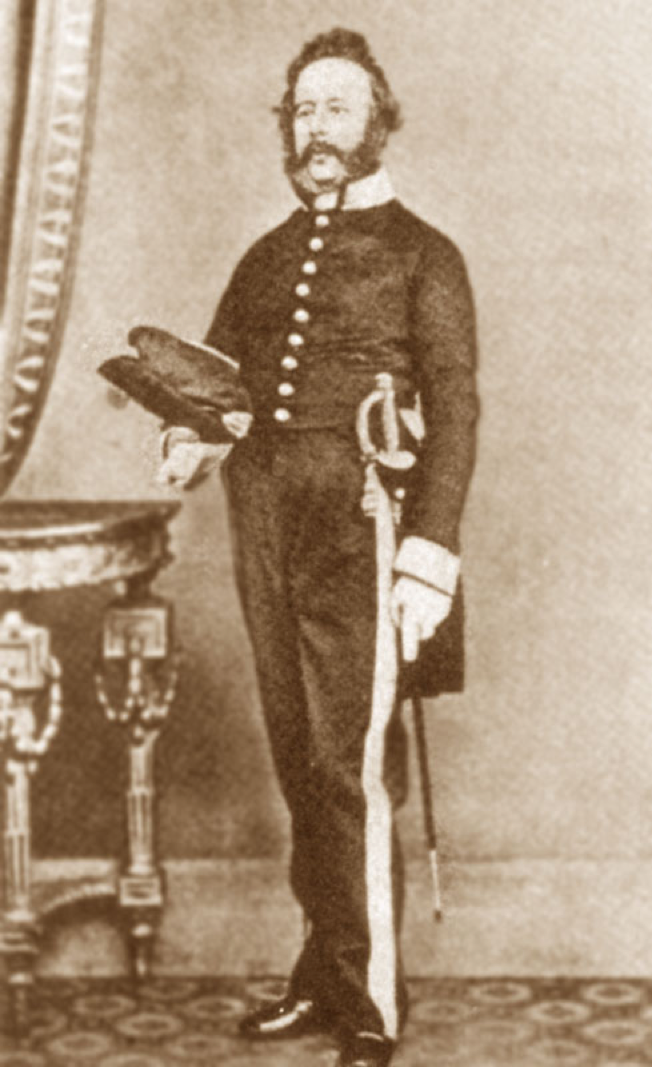As is well-known from his own publications, in May 1855, James Finn, the British Consul in Jerusalem, led a group of 12 (including himself) on a tour of several archaeological sites east of the R. Jordan: notably Hesban, Amman (Philadelphia), As-Salt, Jarash (Gerasa) and Umm Qeis (Gadara). This is how Finn began his published account:
“Over the Jordan and return by the West. We were a dozen Englishmen, including three clergymen, undertaking the above journey, accompanied by the large train of servants, interpreters, and muleteers usually required for travelling in the East. And it was on Wednesday, the 9th day of May 1855 that we started.” (Finn 1867: 1)
As was common in such published accounts, Finn never names any of his companions. He also uses – as we now know, ‘English’ to mean British as at least one of the 11 was a Scottish aristocrat.
Unpublished letters written to his mother by another of the 11 and now being transcribed, frequently do name other members of the group. One of particular interest is the man he refers to not by his surname alone as with the others but as “my friend Godfrey Thring”.
The Rev. Godfrey Thring (25 March 1823 – 13 September 1903), an Anglican clergyman, is well-known as a composer of Hymns but has not previously been identified as one of those westerners who travelled in the East. These new letters reveal him participating in Finn’s expedition ‘East of Jordan’ but they go further. The letter-writer explicitly tells his mother that while in Jerusalem, he was concerned for the delayed arrival there of parties of travellers.
On Saturday 28th April 1855 he records:
“We are getting anxious about three or four parties who have been due for some days from their journey by the Long Desert. We trust no evil has befallen them on the way.”
Then in the evening of 30th April 1855:
“This even(in)g all the Long Desert parties reached Jerusalem. Mr, 2 Misses and Rev. David Buchanan – and Messrs Drummond, Gott, Fox, Calvert, Rust, Macan & my friend Godfrey Thring.”
Some of the names are not transcribed with confidence but the last one is – Godfrey Thring. Thring was then 32. His clerical career is quite well documented but it is notable that he cannot be placed in any position for the years 1853-58. The implication of this for his participation is clear enough – and may be spelled out clearly in the earlier letters when its writer was also in Egypt. Thring had previously been in Egypt and had joined a party on the Long Desert Route to Palestine. Although some parties that set out on that route over the years abandoned their intended itinerary, the intention normally was to trek by camel from Suez for c. 40 days across Sinai Peninsula to St Catherine’s Monastery, climb the holy mountains, continue to Aqaba where they would change guides and escorts to be conducted to Petra then on to Hebron and Jerusalem.
The only known account of a visit to Petra in 1855 is that of Edward Philbrick. He was there with companions in March and mentions and English party a few days behind his. He reached Jerusalem about 8th April and the English party would likely have arrived soon after. That is 2-3 weeks before the dates of the parties mentioned by the letter-writer that included Godfrey Thring.
The implication of these letters and the Philbrick narrative is that there was a considerable cavalcade passing through Petra that season. At the very least:
– Philbrick and companions;
– the English party;
– then – probably, the “three or four parties” reported by the letter-writer and including Thring.

Photo: James Finn
Finn, J. (1867) Byeways in Palestine, London (Nisbet)*

